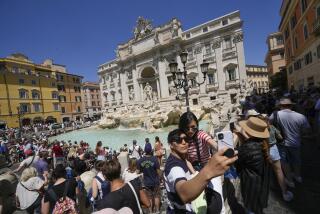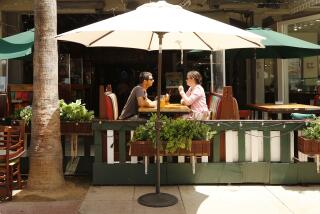Discount Pricing for Locals Takes Toll on the Tourists : Costs: Proponents say residents deserve a break because they patronize establishments year-round.
On a trip to the Colorado Rockies this spring, Bill Fish of Washington encountered a pricing policy he considered unfair to tourists.
Some of the restaurants and shops he patronized, including a Wendy’s fast-food outlet in Silverthorne, routinely offer residents a 10% discount for which he as a visitor didn’t qualify. It angered him, and he lodged a protest with the Chamber of Commerce of Summit County, where Silverthorne is located.
“This is really dumb on their part,” charges Fish, an employee of the Federal Aviation Administration. “The bread and butter of the county is tourists. I think everybody ought to be treated squarely.”
Like it or not, tourists frequently are expected to pay more for the same services or goods than their hosts. In Hawaii, permanent residents can fly between the islands on Aloha Airlines for a one-way fare of $64 while visitors pay $74. When I visited St. Petersburg, Russia, last year, I paid $6.50 to enter the Hermitage, one of the world’s great art museums. The price for Russians came to about 26 cents.
So what can you do about it?
In Fish’s opinion, you can avoid places that discriminate in pricing against tourists, or you can “pretend you’re a local.” At the Silverthorne Wendy’s, however, the latter tactic doesn’t work. As Fish discovered, the restaurant asks for a valid Colorado driver’s license showing a Summit County address.
A third option, perhaps, is simply to understand why residents sometimes get a better deal. Wendy’s and Aloha, along with the Summit County Chamber of Commerce, maintain that there are valid reasons for the practice.
“We are trying to do something nice for the locals,” says Mina Baker, manager of the Wendy’s outlet in Silverthorne. Unlike tourists who may visit for just a few days or a week or two, “The locals are here all year-round. They give us steady business.” She says a 10% discount on food is offered throughout the year to customers with a Summit County address, as well as to those age 65 and older.
Baker believes that the majority of restaurants and other service-type firms in the county offer locals much the same deal. Maxine Thomas of the county chamber of commerce says she is aware of several county firms that give residents a discount, but she doesn’t want to speculate on how widely spread the practice is. Nevertheless, the firms that offer discounts do so particularly during the spring and fall off-seasons when the tourists aren’t around. “They have to give incentives to the locals to come in and buy stuff,” she says, “so they can last through the off-season. They’re just trying to cover their costs.” If the locals didn’t shop in the off-season, many of the firms providing goods and services tourists demand might go out of business.
And in many cases, the locals really do need the price breaks. Many of them earn little more than the minimum wage in food-handling or other tourism-type jobs, she says, and dining out even at a fast-food outlet is considered a big expense.
Visitors who are aware of a discount for locals should ask for it for themselves, she advises. She doubts that many firms will require identification, because “they need the business.”
Aloha contends that the airline’s discounts to Hawaiian residents compensate them for disadvantages not borne by tourists. As Deaner Snively of Aloha’s San Francisco sales office explains, mainland residents who want to travel can hop in their cars and drive from state to state. But anyone in Hawaii who wants to go any distance from home must fly, even if only to a neighboring island, which is costly.
But locals don’t get the best deal; members of the American Automobile Association Assn. get an even better break. A one-way ticket between islands is just $58 if you hold an AAA card, compared to the $64 price for locals.
In my experience, many economically strapped nations--including Russia and the former Communist bloc nations--impose two-tier pricing systems for theater and museum tickets and city sightseeing tours. As long as I’m aware of what’s happening, this has never bothered me. At the Hermitage, a sign at the ticket booth in Russian-- noted the differing prices for Russians and foreigners.
At $6.50, the entrance fee hardly seemed outrageous. The price is about what I would expect to pay in many American cities for a museum of similar quality. And if during these troubled times for Russia the extra money helps keep the museum open and in good shape then so much the better.
As Fish points out, my option if I didn’t want to pay more was to skip the museum. That’s every visitor’s decision.
But even in Russia, you can get around this double standard if you choose. I stood in line at the Hermitage with a group of about 20 teachers and high school students from California touring on a cultural exchange program. To save money, they sent their Russian guide up to the ticket booth to buy 26-cent tickets for everyone.
Christopher Reynolds’ column will return next week.
More to Read
Sign up for The Wild
We’ll help you find the best places to hike, bike and run, as well as the perfect silent spots for meditation and yoga.
You may occasionally receive promotional content from the Los Angeles Times.






